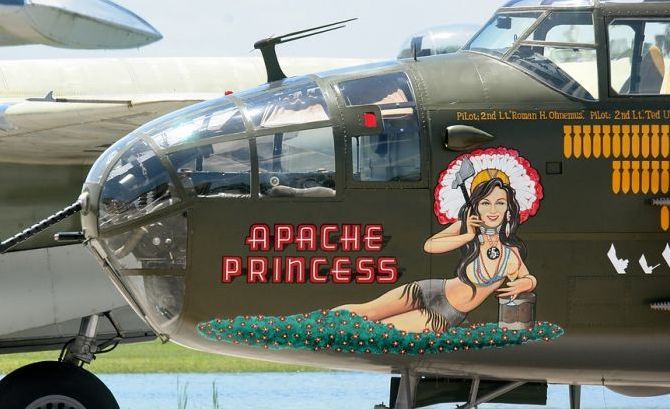|
|
Nose Art Painting Of A Military Aircraft
|
History
The practice of putting personalized decorations on fighting aircraft originated with Italian and German pilots. The first recorded piece of nose art was a sea monster painted on the nose of an Italian flying boat in 1913. This was followed by the popular practice of painting mouths underneath the propeller spinner, initiated by German pilots in World War I. The cavallino rampante (prancing horse) of the Italian ace Francesco Baracca was another well-known symbol, as was the red-painted aircraft of Manfred von Richthofen. However, nose art of this era was often conceived and produced by the aircraft ground crews, not by the pilots.
Other World War I examples included the "Hat in the Ring" of the American 94th Aero Squadron (attributed to Lt. Johnny Wentworth) and the "Kicking Mule" of the 95th Aero Squadron. This followed the official policy, established by the American Expeditionary Forces' (AEF) Chief of the Air Service, Brigadier General Benjamin Foulois, on 6 May 1918, requiring the creation of distinct, readily identifiable squadron insignia. What is perhaps the most famous of all nose art, the shark-face insignia made famous by the American Volunteer Group Flying Tigers, also first appeared in World War I on a British Sopwith Dolphin and a German Roland C.II, though often with an effect more comical than menacing. The American Volunteer Group decided to paint shark mouths on their P-40Bs after seeing a color photo in a newspaper of an No. 112 Squadron RAF P-40 fighter in North Africa with the shark mouth painted on it.
While World War I nose art was usually embellished or extravagant squadron insignia, true nose art appeared during World War II, which is considered by many observers to be the golden age of the genre, with both Axis and Allied pilots taking part. At the height of the war, nose-artists were in very high demand in the USAAF and were paid quite well for their services while AAF commanders tolerated nose art in an effort to boost aircrew morale. The U.S. Navy, by contrast, prohibited nose art, the most extravagant being limited to a few simply-lettered names, while nose art was uncommon in the RAF or RCAF.
|
|









